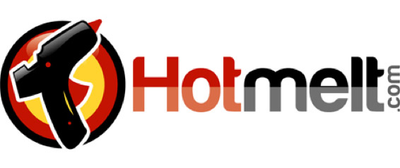Comparing Traditional Hot Melts Vs. PUR Hot Melts
There are several kinds of industrial adhesives available on the market. The most popular kind, by far, is hot melts.
Traditional Hot Melt Adhesives
Hot melt adhesives are polymer-based and thermoplastic in nature, meaning they are solid at room temperature. These are generally applied as either a molten film or in a series of beads that are converted to a solid form when the materials cool and set. Because they do not utilize water or solvents, they also have a fast set time.
Use traditional hot melts when your budget matters more than the strength of your bond. Bulk hot melt adhesives are one of the easiest ways to control the cost of your adhesive. That said, hot melts do not provide a structural bond. While there are some strong hot melts out there, you should not use a traditional hot melt if the bond will be exposed to direct heat or varying weather temperatures. A hot melt is applied in a liquid state - if exposed to heat, the bond will return to its original liquid state and fail.
The “PUR Difference”
PUR hot melt is different from traditional hot melt. It is dispensed in very much the same way with the adhesive heated to a liquid state and applied to the materials. When it cools, the materials will stick togehter. But as it cools, it reacts with moisture in the air and changes chemically to create an incredibly strong bond. This bond then continues to strengthen over 24 to 48 hours until it is fully cured.
Because of its great strength, it is used in tons of manufacturing and product assembly applications across the world. It can be applied as a bead or sprayed to covering large surface areas. These adhesives also come in a wide range of open times and viscosities allowing them to cater to specific application needs. Because they are so versatile, they are becoming increasingly popular.
Use PUR when you need a structural bond, but don't want to deal with the messy dispensing and mixing that many adhesives like MMA adhesives and epoxies require. Use PUR when you want to replace fasteners, staples, nails, and screws. You'll find PUR in applications that require strong bonds to wood, plastics, fabrics, leather and many other materials.
The Advantages & Disadvantages of PUR vs. Traditional Hot Melt
Now that you know a little bit about each type of adhesive, it is important to review the pros and cons of PUR hot melt and traditional hot melt to help you decide which type of product is right for your application.
Benefits of PUR Hot Melt:
|
Benefits of Traditional Hot Melt:
|
Disadvantages of PUR Hot Melt & Traditional Hot Melt
While there are many benefits of PUR and traditional hot melt, they are not without their downfalls.
In comparison to traditional hot melt, PUR tends to be more expensive. They also require special equipment like PUR guns that can add to costs (and maintenance times). Because of the way they cure with water, another con of polyurethane hot melt is that they have more considerations when it comes to storing them. Improper storage with exposure to moisture can ruin the product. For this reason, they have a shelf life around 12 months as compared to other hot melts that have none.
One of the disadvantages of traditional hot melts is that they form just a thermal bond. So, they are not as strong as PURs. If strength is your number one priority, you may want to reconsider your choice. Another downfall to traditional hot melt versus PUR hot melt is that it tends not to have as high of heat resistance.
We Are Here to Help
As always, we are available to answer any questions you have on the benefits of PUR versus traditional hot melts as well as any potential downfalls. We're happy to provide product recommendations, discuss applications, or provide a custom quote based on your needs. Contact us today to speak with an expert.







